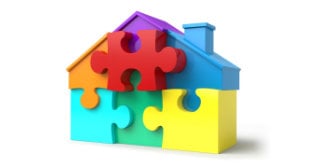Replacement Cost means the coverage will pay for the cost of rebuilding, repairing, or replacing the damaged property using new materials, and current labor costs to bring the damaged property back to a like quality in the same location as it originally was created. The intent of replacement cost coverage is to restore the insured to the state they were prior to the loss.
Actual Cash Value
The intent Actual Cash Value, on the other hand, it to restore the insured to their same economic or financial position prior to the loss. This policy pays the current market value of the depreciated property.
For example, if your roof cost $40,000 to build 8 years ago it could cost $50,000* to build the same roof today. Replacement Cost would pay $50,000 (minus deductible) to rebuild the roof, and Actual Cash Value would only pay the depreciated value of $30,000 (minus deductible) as the roof would have already suffered wear and tear and would have needed to be replaced eventually if a loss had not occurred.
Should the insured decide not to rebuild their roof using materials of like kind and quality and in the same location then the policy would only pay the Actual Cash Value even if the insured has a Replacement Cost policy because the insured is deciding not to replace the roof.
It is important to note that in neither instance – whether replacement cost of actual cash value - will the policy pay out greater than the limits of liability.
Please join us in Everything you ever wanted to know about homeowner’s insurance and then some, Part 4 where we will explore the advantages and disadvantages of the different HO policies.





